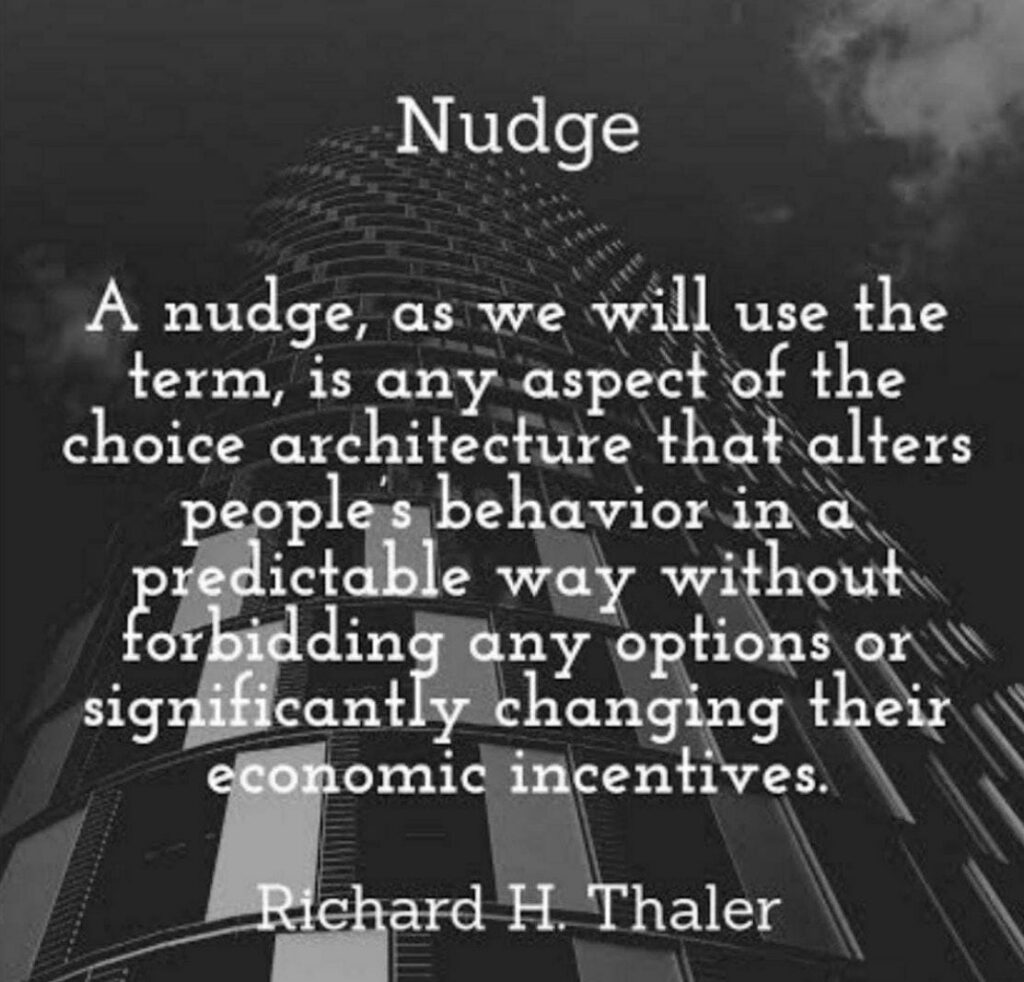02nd June, 2022
A father was cajoling his daughter to jump into the pool.
The little girl was adamantly refusing.
He was getting frustrated.
Then something happened.
He sweetened the offer with a promise of a big two-scoop Chocolate ice cream.
Splash!
She was in the water before he could count 3!
That little incentive was a nudge.
A nudge is a small act – an extrinsic one – that triggers people to change behaviours and take decisions.
The nudge theory is pretty popular worldwide and can be used in 3 forms:
Perception nudges
A food survey in the USA in 2012 revealed that people majorly opted for ‘99% fat free’ in place of ‘1% fat’!
It’s common perception psyche.
Motivation nudges
A municipal corporation in the UK was sending repeated mails to tax defaulters to pay up.
Without result, till it changed a tactic.
It sent a ‘personalised’ email to every defaulter with coloured graphics depicting details of tax payers in the neighbourhood with no dues.
63% paid up in 3 days.
Ability nudges
In March 2009, the admin staff at the Schiphol Airport stuck up tiny fly shaped stickers on the urinals in the men’s wash rooms.
It worked. Men aimed at the flies.
And ‘spillages’ reduced by 80%.
Behavioural economist, Dr. Richard Thaler, won the 2017 Nobel for his outstanding work on the Nudge theory in which he suggested consumer behaviour can be influenced by small suggestions and positive reinforcements.
Proponents of nudge theory suggest that well-placed ‘nudges’ can reduce market failure, save the government money, encourage desirable actions and help increase the efficiency of resource use.
A subtle suggestion may be more powerful than direct instructions.
Use the ‘Nudge theory’ to improve effectiveness & stay blessed forever.

